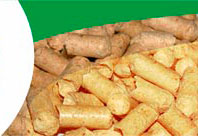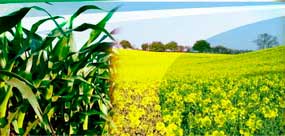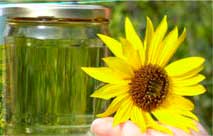Wood pellet fuel and the residential market
Wood pellets are a source of a renewable energy produced from a variety of wood waste products. This fuel is manufactured in an established production process with U.S. and Canadian production figures in the range of 680 to 690,000 tons per year for the last three heating seasons. The majority of this fuel is consumed in home heating stoves but there is a growing world market for other uses such as large scale electricity generation in Sweden.
The pellets themselves have a cylindrical form 6mm to 8mm ( 1A to 5/16 inch) in diameter and must not be longer than 38mm ( 1.5 inches ). Thus formed, they are an easily managed, free flowing, virtually dust free fuel.
The Pellet Fuel Institute ( PFI ), an association of stove producers, fuel producers and their suppliers, has established two residential fuel standards, a Premium Grade and a Standard Grade. These standards enable fuel consumers to select the fuel grade best suited to their particular stove or furnace.
The Premium Grade Pellet Standard - specifies the inorganic ash content shall be lessthan 1%. The majority of these pellets will be made from white wood ( no bark ) because this is lower in ash which leaves less residue in the stove after combustion. The standard further specifies that the pellet bulk density shall not be less than a specific gravity of 0.64 ( 40 lbs/cubic foot ) and the fines in the pellets shall not be more than 0.5% by weight. Fines are defined as particles that will pass through a 3mm (1/8") mesh screen.
The Standard Grade Pellet Standard - includes the same criteria for % fines, bulk densityand dimensions but has a less stringent inorganic ash specification of less than 3%.
The heating value of these pellets varies with the composition of the wood itself, including the wood species, resins and bark. Pellets made from the wood of nonresinous species have a higher heating value of 18.6 to 19.8 MJ/kg ( 8000 to 8500 Btu/lb.) and fuels from the bark yields values of 17.2 to 22.8 MK/kg ( 7400 to 9800 BTU/Ib. ). The wood of resinous species yields 20.0 to 22.5 MJ/kg ( 8600 to 9700 Btu/lb. ) and the bark has 20.4 to 25.1 MJ/kg ( 8600 -9700 Btu/lb. ).
The calorific value of this fuel is an interesting point. Pelleting itself does not change the calorific value of any material. It merely puts the material in a different physical form with higher density, better storage, handling and transportation characteristics. However, if in the front end stock preparation, moisture is removed by dryers, the calorific value is improved since this value is directly related to the moisture content of the material.
Any copying and distributing the material of Ukrainian Biofuel Portal
without active hyperlink is stricly prohibited !
Link to this news: Wood pellet fuel and the residential market
Copy & Paste This Code to your website:
Views: 15756 Added: 11-06-2008
Average Rating:
Wood pellet fuel and the residential market







